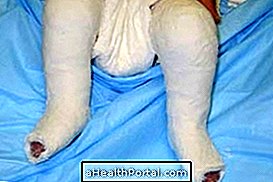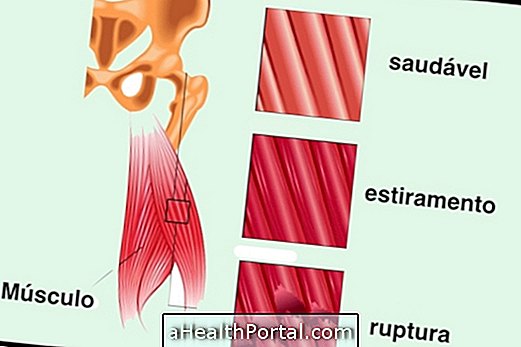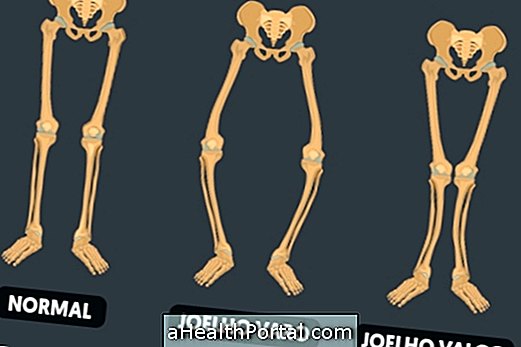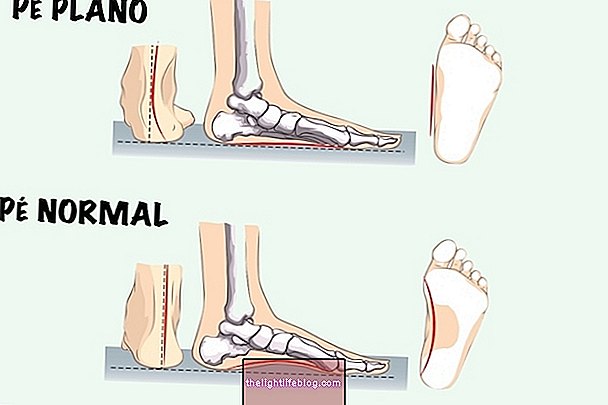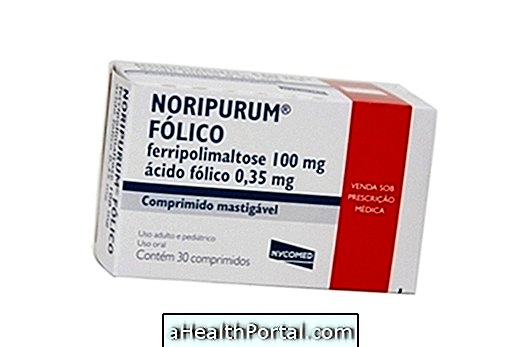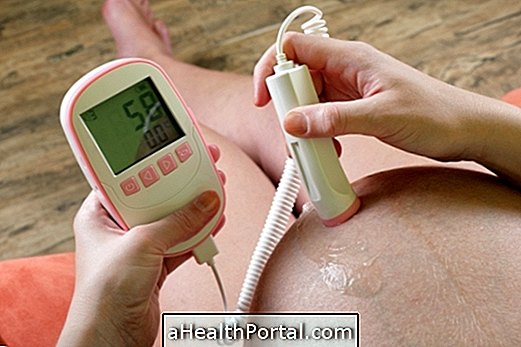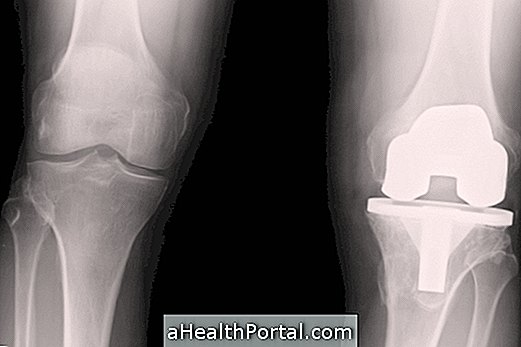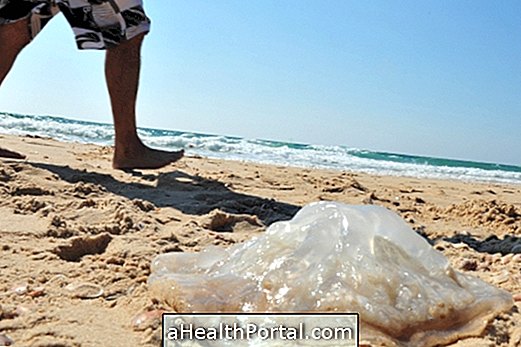The heel fracture is severe, usually leaves sequels and has a long recovery and the person may have to stay for 8 to 12 weeks without being able to support the foot on the floor. During this time the doctor may indicate the use of a gypsum initially, and after about 15 or 20 days swap it for a splint that can be removed to do physiotherapy.
In the first 5 days the person should stay as long as possible with the raised foot so that it does not become swollen, which tends to make the pain worse. You should also not use crutches to avoid resting your foot on the floor and so folding your leg and moving around through the jumps or with the help of another person next to you can be useful to go to the bathroom, for example.
How to know if there was a fracture of the calcaneus
Symptoms that may indicate that there was incleum heel fracture the pain, swelling in the foot after a standing fall. The diagnosis is made based on X-ray at two different angles and computed tomography to assess fracture angle if small foot joints were affected and whether other foot structures like ligaments and tendons were also affected.
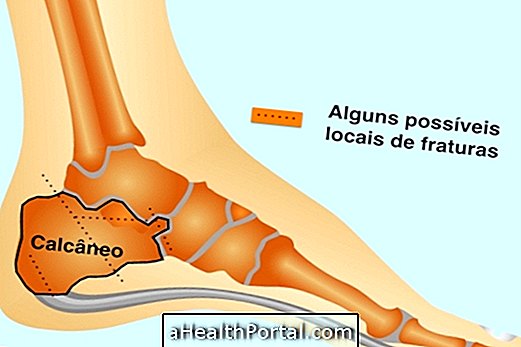
How is the treatment for calcaneal fracture done?
The treatment is done by placing a plaster boot to immobilize the foot for a few weeks, but surgery may also be necessary to consolidate the fracture, allowing foot mobility.
To facilitate the movement of the person beyond the boot with plaster, the doctor may recommend that you use crutches, but never put your foot on the floor, so it is best to move as little as possible, sitting or lying down, which can also be tiring
Using pillows of varying heights can be helpful in keeping the foot elevated, to deflate, support the leg and avoid pain in the glutes or back.
When to have surgery
The surgery after the fracture of the calcaneus should be performed by the orthopedist and is usually indicated when, in addition to the fracture of the calcaneus, there are:
- Deviation of the heel bone greater than 2 millimeters;
- Many bony fragments occur when the heel bone splits into many pieces;
- Compression of the lateral tendons due to the enlargement of the bone, causing tendinitis;
- Need to put bone graft or steel wires, plate or surgical screws so that the bone glue again;
- Need to make an arthrodesis, which is the fusion between the calcaneus and the talus, which decreases the risk of future arthrosis.
Surgery does not need to be performed as soon as the fracture is identified but it is safer to choose between 7 and 14 days after the event to make the region less swollen. However, it may be helpful to seek the opinion of more than one orthopedist to assess the risk and need for surgery.
Surgery is time-consuming and even during the procedure, X-rays can be performed at the upper and lateral angles to check the positioning of the bone and plaques. After surgery the doctor may recommend taking anti-inflammatories to relieve pain and inflammation helping in recovery.
If wires, plates or other external fixation devices are placed, they can be removed after about 15 days, in cold blood, without anesthesia. Its removal is painful and can cause bleeding but usually it is enough that the place is cleaned with alcohol at 70 degrees daily and the dressing can be changed whenever it is dirty or wet. In 8 days the small holes should be completely healed.
Possible complications and sequelae
After a fracture of the heel can arise complications such as osteomilelite which is when the bone infects due to the entry of viruses, fungi or bacteria causing intense local pain. Learn more here. The most common sequelae include:
- Arthrosis due to the constant friction between the small joints between the bones of the foot;
- Pain in heel and ankle joint;
- Stiffness and difficulty in moving the ankle in all directions;
- Enlargement of the heel, which can make it difficult to wear closed shoes;
- Pain in the sole of the foot, with or without sensation of burning or tingling.
It is not always possible to identify when these complications can happen but it is possible to avoid them following all the directions of the doctor and the physiotherapist.
When to start physical therapy

Physiotherapy should be individualized and the physiotherapist should evaluate each case because the treatment may not be the same for everyone. The sessions can be started as soon as possible, even before fracture solving and can be several goals. In the first few days after the fracture it may be helpful to do physiotherapy with:
- Which is excellent for fracture healing and
- Cryotherapy with Nitrogen like Crioflow to eliminate the hematoma and to deflate the foot.
In addition, techniques can be used to lengthen the leg muscles, to move the fingers and the ankle, always respecting the limit of the pain and the amplitude of movements. There are several exercises that can be recommended depending on the fracture healing. Elastic bands with varying intensities can be used to position the tip of the foot up, down and move the foot sideways.
When to go back to work
Usually the person can return to work after 6 months of the heel fracture and during this period may be allowed to work leave so that he can perform the necessary treatment. In some cases it may be possible to make an agreement with the employer so that the work can be carried out from home for a period, until it can be returned to the company without restrictions.


